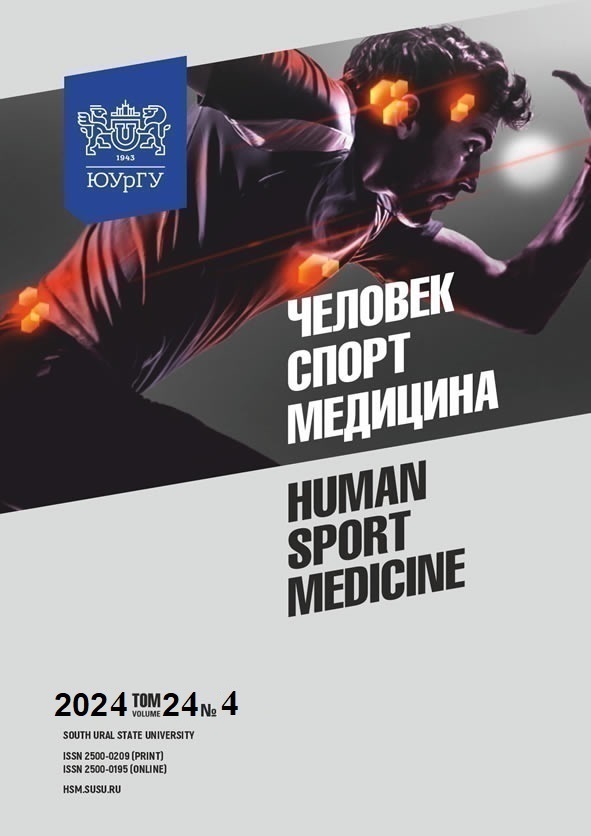DYNAMIC ANALYSIS OF RMSSD IN ELITE CROSS-COUNTRY SKIERS THROUGHOUT THE ANNUAL MACROCYCLE: IMPACT OF TRAINING VOLUME AND INTENSITY
Abstract
Aim. This paper aims to investigate the dynamic changes in RMSSD throughout the three phases of the annual macrocycle in elite cross-country skiers, focusing on its relationship with training volume and intensity. Materials and methods. This study enrolled elite cross-country skiers during preparatory and competitive phases, including one individual, who was studied in detail over three phases. A 5-minute clinostatic test was performed using VNS-Micro MDS (Neurosoft). RMSSD and other HRV measurements were obtained. Training volume (Vkm, Vmin) and intensity (based on working pulse and average heart rate) were recorded for individual K.D. Results. For individual K.D., median RMSSD was highest during the preparatory period (108 ms), followed by a decrease in the competitive period (101 ms, p < 0.05) and further reduction in the transition period (96 ms). The team’s median RMSSD showed a similar pattern, with higher values during the preparatory period (110 ms) compared to the competitive period (96 ms, p < 0.05). Our findings indicate a stable RMSSD value relative to spectral HRV indicators, suggesting the potential development of anxiety in elite skiers. For skier K.D., a positive correlation between RMSSD and training duration at a heart rate of 120–121 beats per minute was recorded, which was typical of the entire season (Spearman’s coefficient r = 0.15). Conclusion. These results suggest that elite skiers develop an anti-apoptotic myocardial system, potentially involving non-neuronal acetylcholine. The median RMSSD may serve as a measure for its synthesis.
References
References on translit
Copyright (c) 2025 Human. Sport. Medicine

This work is licensed under a Creative Commons Attribution-NonCommercial-NoDerivatives 4.0 International License.















